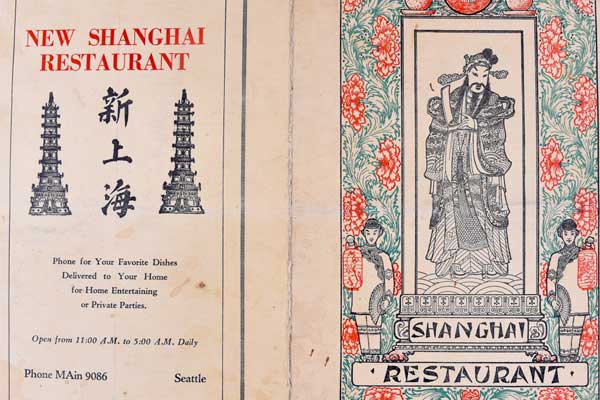
World's largest collection of Chinese menus acquired by University of Toronto
Published: February 10, 2016
A massive collection of Chinese food artifacts recently acquired by U of T Scarborough will help scholars explore the important role food culture has played in the immigrant experience throughout North America.
“This collection really puts us on the map as an important destination for those interested in studying not only food but the role of migration and food,” says Professor Dan Bender, director of UTSC’s Culinaria Research Centre.
News of the quirky collection, which includes restaurant matchbooks and other ephemera, is already grabbing headlines.
See the CBC's story from As it Happens
Read the Toronto Star story
“The menus in particular tell a story that is more than just a list of items for sale,” Bender says. “It’s a conversation taking place between the cook, waiter and owner with the customer. It’s evidence of a relationship, one that shows signs of respect but also fraught with anxiety and tension.”
Consisting of 10,000 items, mostly Chinese menus collected by Harley J Spiller between 1981 and 2009, the collection also contains documents, photographs and other artifacts. The collection includes menus from all 50 U.S. States, across Canada and the world. In 2005, it was recognized by the Guinness World Records as the largest of its kind.

The collection is being digitized by the UTSC library and will likely be used to map out the development of Chinese food culture in North America, notes Bender. The menus, especially the earlier ones, also highlight an important cultural and economic legacy left by Chinese who immigrated to North America.
“By opening restaurants these immigrants were exercising mobility rights in a society that officially excluded them,” he says.
Read more about food research at UTSC
Immigrants were also communicating aspects of their cultural traditions to a new society, Bender says, and sometimes in very creative ways. Dishes developed specifically to cater to North American customers, such as Chop Suey or Egg Fu Yung, are evidence of an elaborate cultural give and take.
“In some ways it’s a subtle jibe, like saying ‘you may think this is what Chinese culture is about,’ but only permitting them to see a small slice that’s been carefully crafted.”

The oldest menu in the collection, dated September 13, 1896, is believed to have been used at a luncheon in New York honouring Chinese statesman Li hongzhang. About 1,000 menus date before 1960. Some have elaborate and colourful illustrations on the cover. In addition to menus there are chopsticks, postcards, plastic spoons and even a toy wok. There are also photographs and postcards of Chinese food and restaurants from around the world.
The UTSC library is digitizing the collection in order to make it more accessible to scholars and a general audience, says chief librarian Victoria Owen.
“There are many things that can be gleaned from the items, including prices, locale, change in menus, the graphics. Then you can pinpoint them more closely in time,” she told Yahoo News Canada.
Spiller says he's pleased the collection he created is being preserved by the University of Toronto, where its contents will be seen and studied by scholars.
“UTSC offered a permanent home for my collection. In the hands of the library and archivists it will be seen by more people,” said Spiller. “It’s nice to know it will not only be put to good academic use, but will also be enjoyed for years to come.”




